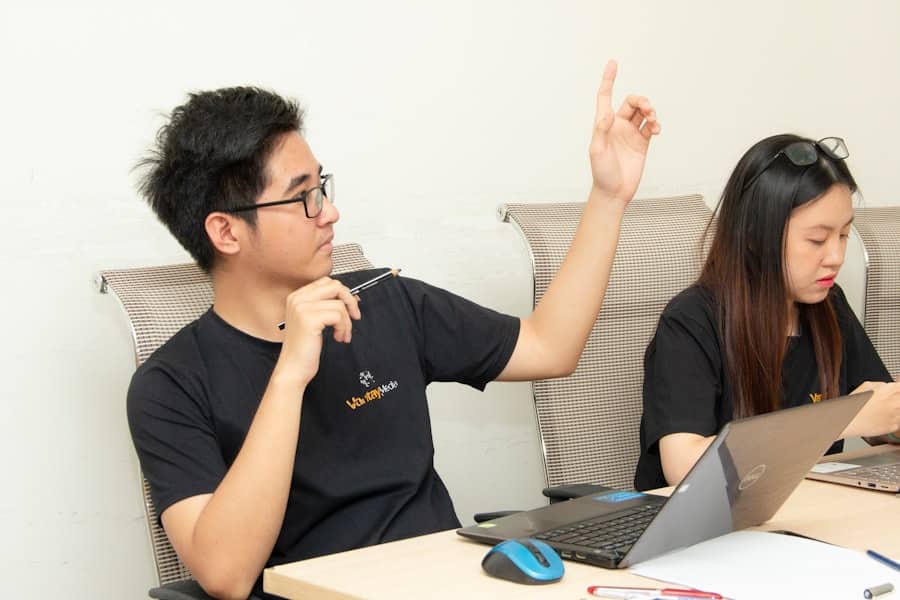The advent of technology has transformed various sectors, and education is no exception. Virtual Teaching Assistants (VTAs) have emerged as a significant innovation in the educational landscape, providing support to both educators and students in a digital environment. These AI-driven tools or software applications are designed to assist in various educational tasks, ranging from administrative duties to personalized student interactions.
By leveraging machine learning and natural language processing, VTAs can engage with students, answer queries, and facilitate learning in ways that were previously unimaginable. The concept of virtual teaching assistants is rooted in the need for scalable educational solutions that can cater to diverse learning environments. As classrooms increasingly adopt hybrid or fully online models, the demand for effective support systems has surged.
VTAs can operate around the clock, providing immediate assistance to students regardless of time zones or geographical barriers. This flexibility not only enhances the learning experience but also allows educators to focus on more complex teaching tasks, thereby improving overall educational outcomes.
Key Takeaways
- Virtual teaching assistants are AI-powered tools designed to support teachers in the classroom.
- Benefits of virtual teaching assistants include increased efficiency, personalized learning, and improved student engagement.
- Virtual teaching assistants improve student engagement by providing interactive and personalized learning experiences.
- They play a crucial role in personalized learning by adapting to individual student needs and providing targeted support.
- Virtual teaching assistants support teachers by automating administrative tasks, providing real-time feedback, and facilitating personalized instruction.
Benefits of Virtual Teaching Assistants
One of the most significant advantages of virtual teaching assistants is their ability to provide immediate feedback and support to students. In traditional classroom settings, teachers often struggle to address every student’s needs due to time constraints and large class sizes. VTAs can bridge this gap by offering real-time assistance, answering questions, and providing resources tailored to individual learning styles.
This immediacy fosters a more responsive learning environment where students feel supported and engaged. Moreover, VTAs can help streamline administrative tasks for educators, allowing them to allocate more time to instructional activities. For instance, these virtual assistants can manage scheduling, grade assignments, and track student progress through data analytics.
By automating these routine tasks, teachers can focus on developing lesson plans and engaging with students on a deeper level. This not only enhances teacher satisfaction but also contributes to a more effective educational experience for students.
How Virtual Teaching Assistants Improve Student Engagement

Engagement is a critical factor in the learning process, and virtual teaching assistants play a pivotal role in enhancing it. By utilizing interactive features such as quizzes, polls, and discussion forums, VTAs can create a dynamic learning environment that encourages participation. For example, a VTA might initiate a quiz after a lesson to assess comprehension and provide instant feedback, making the learning process more interactive and enjoyable for students.
Additionally, VTAs can personalize interactions based on individual student data. By analyzing past performance and engagement levels, these assistants can tailor their responses and suggestions to meet specific needs. For instance, if a student struggles with a particular topic, the VTA can recommend additional resources or exercises that target those weaknesses.
This personalized approach not only keeps students engaged but also empowers them to take ownership of their learning journey.
The Role of Virtual Teaching Assistants in Personalized Learning
Personalized learning has gained traction as an effective educational strategy that recognizes the unique needs of each student.
They can analyze student data to identify strengths and weaknesses, allowing for targeted interventions that cater to individual learning paces and styles.
This level of personalization ensures that students receive the support they need without feeling overwhelmed or disengaged. Furthermore, VTAs can adapt their recommendations based on ongoing assessments, creating a dynamic learning experience that evolves with each student’s progress.
How Virtual Teaching Assistants Support Teachers
The role of virtual teaching assistants extends beyond student interaction; they also serve as valuable allies for educators. By handling administrative tasks such as grading assignments and managing communication with students, VTAs free up teachers’ time, allowing them to concentrate on instructional quality and student engagement. This support is particularly beneficial in large classrooms where individual attention is often limited.
Moreover, VTAs can provide teachers with insights into student performance through data analytics. By tracking engagement levels and identifying trends in student behavior, these virtual assistants equip educators with the information needed to make informed decisions about instructional strategies. For instance, if data reveals that a significant number of students are struggling with a particular concept, teachers can adjust their lesson plans accordingly or provide additional resources to address those challenges.
Challenges and Limitations of Virtual Teaching Assistants

Despite their numerous benefits, virtual teaching assistants are not without challenges and limitations. One significant concern is the potential for over-reliance on technology at the expense of human interaction. While VTAs can provide valuable support, they cannot replace the nuanced understanding and empathy that human educators bring to the classroom.
The risk lies in students becoming overly dependent on virtual assistance, which may hinder their ability to develop critical thinking and problem-solving skills independently. Another challenge is ensuring equitable access to technology among all students. In many regions, disparities in access to devices and reliable internet connectivity persist, which can create barriers to effective learning.
If some students cannot engage with VTAs due to technological limitations, it may exacerbate existing inequalities in education. Addressing these disparities is crucial for maximizing the potential of virtual teaching assistants in diverse educational settings.
The Future of Virtual Teaching Assistants in Education
The future of virtual teaching assistants in education appears promising as advancements in artificial intelligence continue to evolve. As machine learning algorithms become more sophisticated, VTAs will likely become even more adept at understanding student needs and providing tailored support. This evolution could lead to more intuitive interactions where virtual assistants anticipate questions or challenges before they arise.
Furthermore, the integration of VTAs into various educational platforms will likely expand their reach and functionality. As schools increasingly adopt blended learning models that combine online and face-to-face instruction, virtual teaching assistants will play an essential role in facilitating seamless transitions between these modalities. The potential for collaboration between human educators and AI-driven assistants could redefine the educational experience, creating a more holistic approach to teaching and learning.
Tips for Implementing Virtual Teaching Assistants in the Classroom
Implementing virtual teaching assistants effectively requires careful planning and consideration of various factors. First and foremost, educators should assess their specific needs and objectives before selecting a VTA platform. Different tools offer varying features; thus, aligning the chosen technology with educational goals is crucial for maximizing its impact.
Training is another essential component of successful implementation. Both teachers and students should receive adequate training on how to use the VTA effectively. This includes understanding its capabilities, limitations, and best practices for interaction.
Additionally, fostering an open dialogue about technology use in the classroom can help mitigate concerns about over-reliance on virtual assistants while promoting a balanced approach to learning. Finally, continuous evaluation is vital for ensuring that the VTA remains effective over time. Educators should regularly assess its impact on student engagement and learning outcomes while soliciting feedback from both students and parents.
This iterative process will allow for adjustments and improvements that enhance the overall educational experience. In conclusion, virtual teaching assistants represent a transformative force in education, offering numerous benefits while also presenting challenges that must be navigated thoughtfully. As technology continues to advance, their role will likely expand further, shaping the future of teaching and learning in profound ways.
Virtual teaching assistants are becoming increasingly popular in educational settings due to their ability to provide personalized learning experiences and support to students. These AI-driven tools can help educators manage their workload more efficiently, allowing them to focus on more critical aspects of teaching. A related article that delves into the broader implications of technology in our daily lives is What We Can Learn from Instagram’s Founders’ Return to the Social Media Scene. This article explores how technological advancements and innovative thinking continue to shape various industries, including education, by offering new tools and platforms that enhance user experience and engagement.
FAQs
What are virtual teaching assistants?
Virtual teaching assistants are AI-powered tools that help teachers in various tasks such as grading assignments, providing personalized feedback to students, and managing administrative tasks.
Why are virtual teaching assistants gaining popularity?
Virtual teaching assistants are gaining popularity because they can help teachers save time, provide personalized support to students, and improve the overall learning experience in a virtual or hybrid classroom setting.
What are the benefits of using virtual teaching assistants?
Some benefits of using virtual teaching assistants include improved efficiency for teachers, personalized support for students, and the ability to handle repetitive administrative tasks, allowing teachers to focus on more meaningful interactions with students.
How do virtual teaching assistants work?
Virtual teaching assistants work by using AI algorithms to analyze student data, provide personalized feedback, and assist teachers in various tasks such as grading assignments and managing classroom resources.
Are virtual teaching assistants replacing human teachers?
Virtual teaching assistants are not meant to replace human teachers, but rather to support them in their work and help improve the overall learning experience for students. Human teachers still play a crucial role in providing guidance, mentorship, and personalized support to students.

